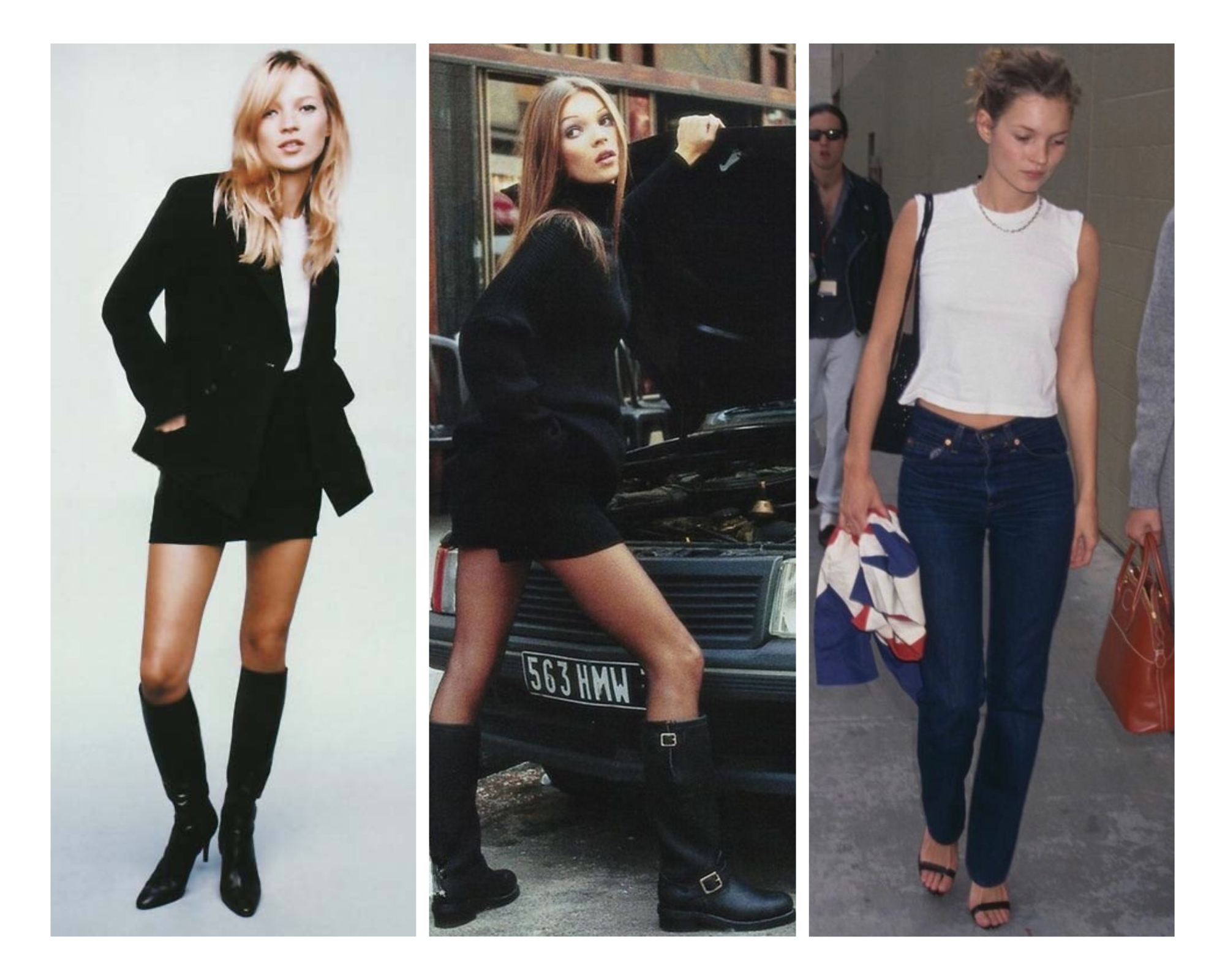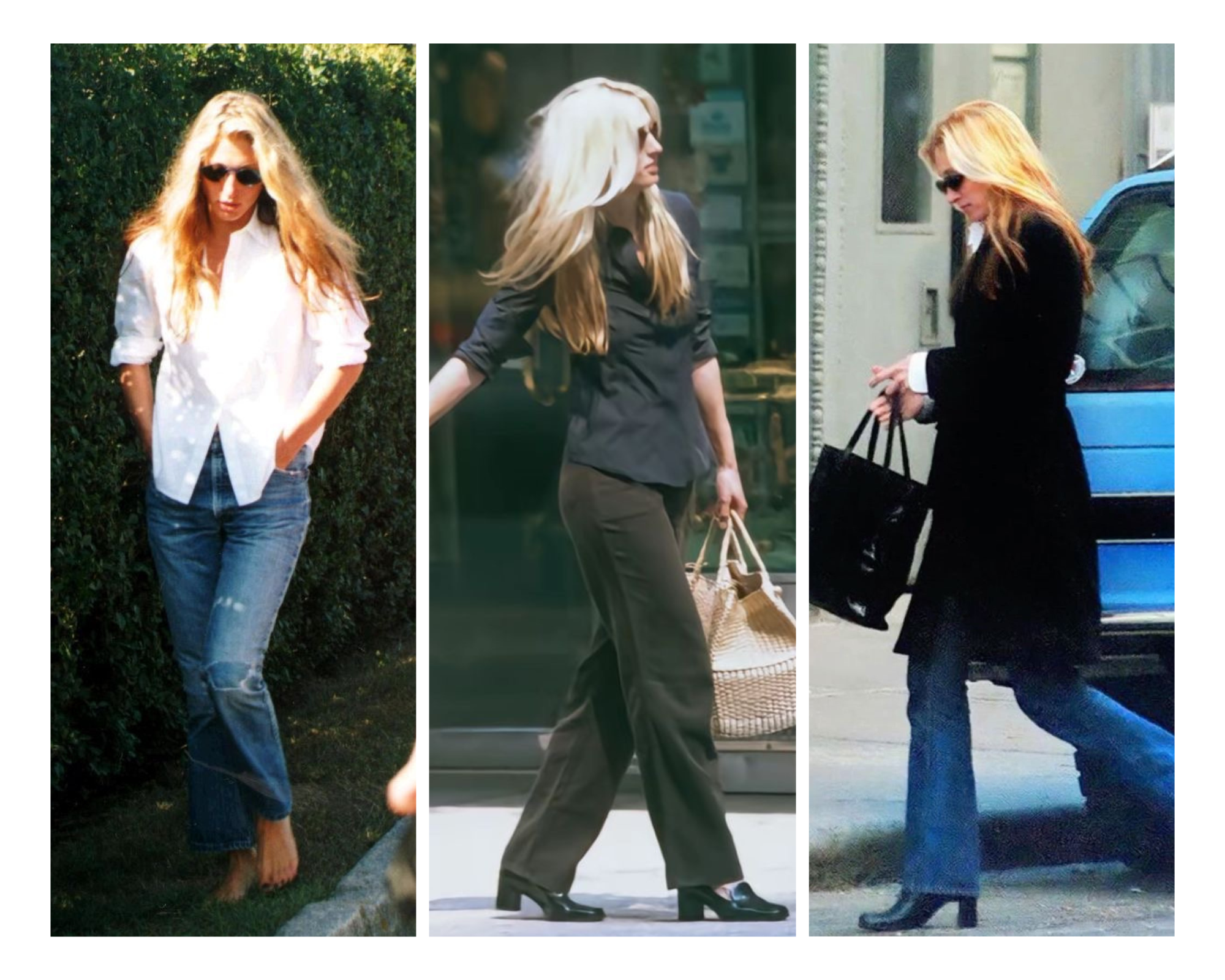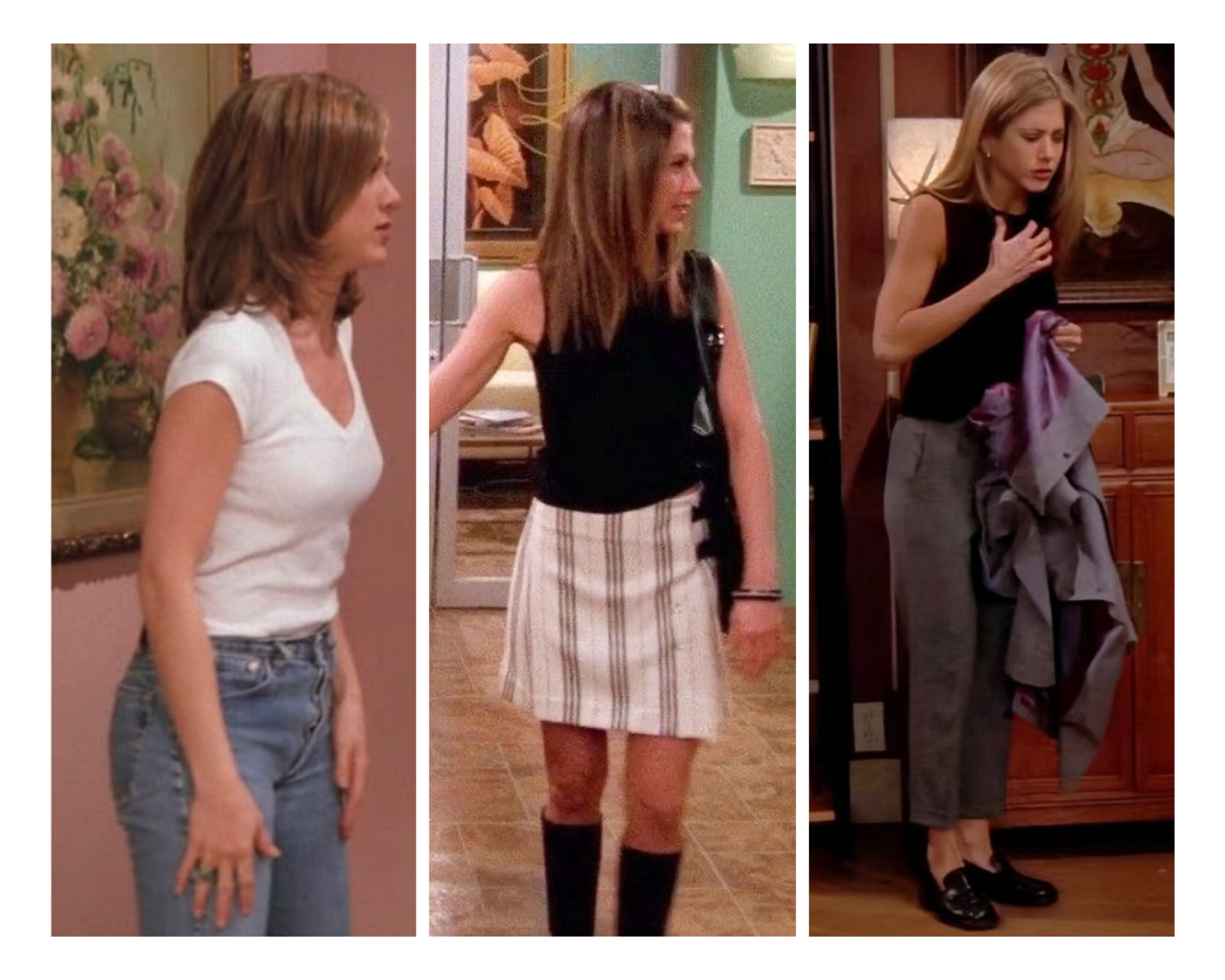90s minimalism
Why we’ll always return to it
minimalism in the 90s
When you think of minimalism in fashion, wardrobe essentials immediately come to mind: a ribbed black tank, straight-leg jeans, tees in black, grey, and white, or a perfectly cut midi skirt. These staples may sound simple, but they make a quiet, powerful statement: less is more.
But minimalism didn’t just happen overnight like a passing trend. It was created as a reaction. In the 1980s, fashion thrived on excess: bold neon colors, padded shoulders, power suits, and luxury as the standard. By the early 90s, fashion shifted sharply in a new direction. Grunge became an “anti-fashion” movement, defined by flannels, ripped denim, and messy hair- think Kurt Cobain and Courtney Love. But at the same time, designers like Calvin Klein, Helmut Lang, Tom Ford, and Jil Sander introduced a new vision: sexy yet polished, refined but raw. Calvin Klein’s iconic campaigns with Kate Moss in the early 90s, often topless or in a simple white tee and jeans, captured the cool, stripped-back chic of a new era. What unfolded was more than a trend; it was a cultural reset, defined by timeless silhouettes, high-quality materials, and confidence in simplicity.
The Origins of 90s Minimalism
The end of the 80s came with a global recession, moving fashion away from flashy, unnecessary excess. The industry needed something new. Unlike grunge, which leaned into a disheveled rebellion, minimalism offered a refined alternative.
Key traits of the style included clean lines, simple silhouettes, and neutral colors: black, beige, white, navy, cream, grey, and brown. It valued craftsmanship and fabric quality above all. Staple pieces such as slip dresses, pencil skirts, blazers, loafers, and leather bags from houses like Gucci and Prada defined the wardrobe. Designers set the new tone: Calvin Klein with his understated sex appeal, Jil Sander with her precision and purity, Tom Ford with his sleek sensuality, and Helmut Lang with his urban minimal edge.
Minimalism felt both modern and timeless at the same time, and that’s exactly why it continues to resonate.
The Icons Who Defined It
Every fashion era has its icons, and 90s minimalism was no exception.
Kate Moss became the face of Calvin Klein’s stripped-back vision. With her signature “heroin chic” aesthetic, she mastered the original off-duty model look in jeans, basic tops, and her Doc Marten boots.
kate moss, english supermodel
Carolyn Bessette Kennedy embodied aspirational minimalism with tailored coats, satin dresses, menswear-inspired looks, and monochrome palettes that are still trendy today.
carolyn bessette-kennedy, fashion publicist & trendsetter
Rachel Green, played by Jennifer Aniston, from the most-watched show of the 90s, Friends, translated minimalism into everyday style. Her character, who worked in fashion at Bloomingdale’s and Ralph Lauren, often wore plaid skirts, slip dresses, denim, and baby tees, making these outfits accessible to millions of women.
jennifer aniston, american actress
What set minimalism apart was its universal versatility. It worked across all social classes and style aspirations. All you needed were the essentials: a well-made sweater, a tailored coat, good denim, and a handful of timeless shoes; flats, sneakers, loafers, and sandals.
Why We’re Still Attracted to It Today
Minimalism will always endure because it delivers on what fashion does best: timelessness, versatility, and confidence. A black slip dress, a white tee, or a sharp blazer can work from day to night, season to season, without losing its purpose. These pieces are easy to repeat, restyle, and mix without much effort. A reminder that looking polished doesn’t need to be complicated.
Simplicity also highlights the person rather than the clothes. You never want what you’re wearing to overpower you. You want to be the one who feels powerful in your style. Minimalism never overwhelms; it accentuates the person. And in today’s world of constant trends like “clean girl” aesthetics and “quiet luxury”, capture this craving for less. Consumers are rebelling against fast fashion fatigue by buying less and buying smarter. They want to invest in quality pieces that last, just as they did in the early ‘90s when minimalism first started as a reaction to overconsumption and excess.
The Emotional Pull
Minimalism isn’t only about aesthetics; it can fulfill an emotional need.
For some, it’s nostalgia. Watching Friends reruns, listening to 90s hip hop, or flipping through vintage Calvin Klein or Guess ads pulls us back to an era when fashion felt both aspirational and accessible. For others, it’s a subconscious craving for simplicity in a culture overloaded with micro-trends and endless shopping hauls. Minimalism feels grounding, almost like an escape from the chaos.
And while some critics call it “boring,” true minimalism is anything but. At its core, it’s about precision, fit, and intention. Much like architecture, its beauty lies in the function and craftsmanship. The quiet power of minimalism is that it never overwhelms; it becomes functional and timeless.
How to Channel 90s Minimalism Now
Wardrobe Staples: straight-leg jeans, slip dresses, ribbed tanks, tailored blazers, leather shoulder bags.
Color Palette: black, white, beige, navy, muted greys, and browns.
Styling Approach: prioritize fit and proportion over layering; let fabrics and silhouettes lead.
Modern Update: gold hoops, loafers, minimalist sneakers, or a pop of red with a monochrome outfit.
Practical Tip: start with strong basics, then refine with accessories.
Conclusion
90s minimalism endures because it was never just a trend- it was the blueprint. It showed us how essentials could be styled with power and ease. A slip dress, a white button-down, or a perfectly tailored blazer can carry as much impact as the flashiest gown.
Today, as we navigate a fast-paced, trend-saturated fashion era, the quiet confidence of minimalism feels more relevant than ever. It reminds us that true elegance isn’t about abundance, but about refinement: the right cut, the right fabric, the right balance of simplicity.
In embracing 90s minimalism, we’re not just revisiting the decade, but we’re returning to the core of what true style should be: effortless, refined, smarter, and endlessly modern.
-NF





